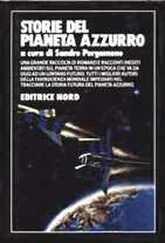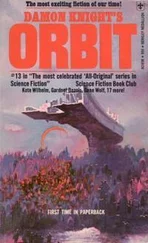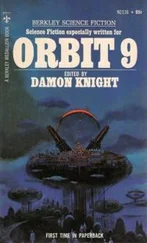Damon Knight - Orbit 21
Здесь есть возможность читать онлайн «Damon Knight - Orbit 21» весь текст электронной книги совершенно бесплатно (целиком полную версию без сокращений). В некоторых случаях можно слушать аудио, скачать через торрент в формате fb2 и присутствует краткое содержание. Год выпуска: 1980, ISBN: 1980, Издательство: Harper & Row, Жанр: Фантастика и фэнтези, на английском языке. Описание произведения, (предисловие) а так же отзывы посетителей доступны на портале библиотеки ЛибКат.
- Название:Orbit 21
- Автор:
- Издательство:Harper & Row
- Жанр:
- Год:1980
- ISBN:0-06-012426-1
- Рейтинг книги:5 / 5. Голосов: 1
-
Избранное:Добавить в избранное
- Отзывы:
-
Ваша оценка:
- 100
- 1
- 2
- 3
- 4
- 5
Orbit 21: краткое содержание, описание и аннотация
Предлагаем к чтению аннотацию, описание, краткое содержание или предисловие (зависит от того, что написал сам автор книги «Orbit 21»). Если вы не нашли необходимую информацию о книге — напишите в комментариях, мы постараемся отыскать её.
Orbit 21 — читать онлайн бесплатно полную книгу (весь текст) целиком
Ниже представлен текст книги, разбитый по страницам. Система сохранения места последней прочитанной страницы, позволяет с удобством читать онлайн бесплатно книгу «Orbit 21», без необходимости каждый раз заново искать на чём Вы остановились. Поставьте закладку, и сможете в любой момент перейти на страницу, на которой закончили чтение.
Интервал:
Закладка:
Four of the five people gathered near the south side of the ring. One of them waved at me and they took off for the landing vehicle. I assumed their air supplies were low. The remaining figure approached me—by his height and gait I had already identified him as Jones. He extended his arm and we shook gloved hands, clumsily. Through his faceplate I could see bright eyes and a wide grin. He drew me forward and hugged me, and then, without signaling for me to switch on my intercom, he turned and left.
I was alone at Icehenge. I sat down and let the feeling saturate me.
Over the next couple of weeks the teams established their pattern of investigation. Those working on the ice spent most of the time in the landing vehicle’s labs. Dr. Hood and his team worked to determine what had been used to shape the liths. Bachan Nimit and his people from Ganymede were taking a new line of inquiry, and hoped to find out if as many micrometeors had fallen on the underside of some of the fragments of the Fallen Lith as had fallen on the upright beams.
But the most visible and, it seemed, the most energetic team was Brinston’s excavation group. Brinston was showing himself to be extremely competent and well-organized, to no one’s surprise. The day after we arrived he had his people out doing the preliminary line digs, and he spent long hours at the site, moving from trench to trench, consulting and giving instruction. In conversation he was confident, a dedicated archeologist certain that his methods would solve what was essentially an archeological problem. “The substructure of the monument will explain it,” he said. At the same time he warned me against expecting any immediate information: “Digging is slow work—even with as simple a situation as this, one has to be very careful not to tear up the evidence one is looking for, which in this case is something as delicate as the marks of a previous excavation and fill, in regolith, no less. . . .” He would talk endlessly about the various aspects of his task, and I would leave him nearly as convinced as he that he would solve the mystery.
The teams established a common working period, and during this time the site swarmed with busy figures. Outside these times the landscape emptied.
I had no specific work to do; I was uncomfortably aware of that. The investigations I wanted made were being made, by professionals competent for the tasks. There was nothing left for me but to watch. So I quickly took to visiting the monument in the off hours. Those few who stayed into these times, or returned to visit, soon became still, contemplative figures, and we didn’t bother each other.
At those times, as I wandered among the massive blocks in a vast silence, the abandoned equipment and trenches gave it the look of a work in progress, a work of giants left unfinished for unknown reasons . . . leaving behind the skeleton, the framework of something even larger. I sat at the center point of the ring for hours, and learned the various aspects it presented at different times of the Plutonian day. It was spring in the northern hemisphere—coldest, longest spring under the sun—and the sun stayed just over the horizon all the time. It took nearly a week for Pluto to spin around, for the sun to circle the horizon; and even at that slow speed I could see the movement of light and shadow, creating a different Icehenge at every moment, from every point of view.
My only regular companion during these meditations was Jones. It was natural enough that he should prefer these times, for only then did the monument fully regain its solitary power, its shadowed obscurity—but I thought, also, that he felt self-conscious doing his work in front of the others.
For work he was doing, laboriously and painstakingly. With a surveyor’s transit, he was measuring the megalith. When I switched to the common band on my intercom, I could hear him muttering numbers to himself and humming snatches of music. He had arranged to have music piped in to him from the landing vehicle while he worked; usually, when I switched to that band, one of Brahms’s symphonies was playing.
Occasionally he enlisted my aid, and I would aim a laser, or peer through a surveying instrument, while he paced across the central field and became a tiny figure against the beams on the other side. He measured and recorded hundreds of distances.
“Just what are you doing?” I once asked him, while we were engaged in this task. “You can’t measure how far each lith is from every other lith, that’s sixty-six times sixty-five—and why would you want to, anyway?”
“Numbers,” he replied. “Whoever built this was very careful about numbers. I want to see if I can find the standard unit of measurement they used. You see, back in the twentieth century a man named Alexander Thom discovered that all of the stone megaliths in northern Europe used the same unit, which he called the megalithic yard. It was about seventy-four centimeters.” He stopped what he was doing. “Now, no one but me has ever noticed that this megalithic yard from northern Europe is almost exactly the same length as the ancient Tibetan unit—”
“And the Egyptian unit used at the Pyramids, undoubtedly; but isn’t that because they’re the standard elbow-to-finger units?”
“Maybe, maybe. Anyway, since the general layout here, flattened-ring construction (they did that to avoid pi , did you know that?), is one of the common patterns for British henges, I thought I’d check to see.”
I laughed. “You could find out in minutes on the computer.”
He looked down at me. “Yeah?”
“Jones, I’m glad you’re here with us.”
He grinned. “You like having someone here crazier than you. But just wait. The numerology of Icehenge was always a rich field, even before these new measurements I’m taking. Did you know that if you begin at the Fallen Lith and count counterclockwise by prime numbers, the mass of each lith increases by one-point-two-three times? Or that the heights of each foursome of consecutive liths add up to either ninety-five point four, one hundred and one, or one-hundred-nineteen-point-five meters? Or that each length divided by width ends with a prime number—”
“Who says all this?”
“ I do. You must not have read my book, Mathematics and Metaphysics at Icehenge. “
“I missed that one.”
“One of my best. See how much you don’t know?”
In this manner several weeks quickly passed. Brinston’s face took on a slightly anxious expression, though he was finding out some interesting things. It appeared that for every lith a large cylindrical posthole had been dug—the ice beam had been positioned on the floor of the hole, which was invariably bedrock, and the hole was then filled. The only other fact they had discovered was that there were no individual postholes for the Six Great Liths. Perhaps because they were so near each other, a single big hole, still cylindrical, had been dug for all of them. Brinston’s team had marked out the circumference of this cylinder, and it encompassed nine liths; but they hadn’t found the bottom of it.
The day Brinston presented this information, Jones and I walked out to the site. Jones was excited, but he wouldn’t tell me why.
We walked through the circle of towers and on to the pole, to watch the henge from there. We sat down directly on the pole, just beside the steel marker that Nederland had placed there to honor Vasyutin. The sun was on the other side of the monument, and the liths were more obscure than ever, faint reverse shadows, a dim lightness against the pervading black. The rock I sat on felt cold.
Читать дальшеИнтервал:
Закладка:
Похожие книги на «Orbit 21»
Представляем Вашему вниманию похожие книги на «Orbit 21» списком для выбора. Мы отобрали схожую по названию и смыслу литературу в надежде предоставить читателям больше вариантов отыскать новые, интересные, ещё непрочитанные произведения.
Обсуждение, отзывы о книге «Orbit 21» и просто собственные мнения читателей. Оставьте ваши комментарии, напишите, что Вы думаете о произведении, его смысле или главных героях. Укажите что конкретно понравилось, а что нет, и почему Вы так считаете.












